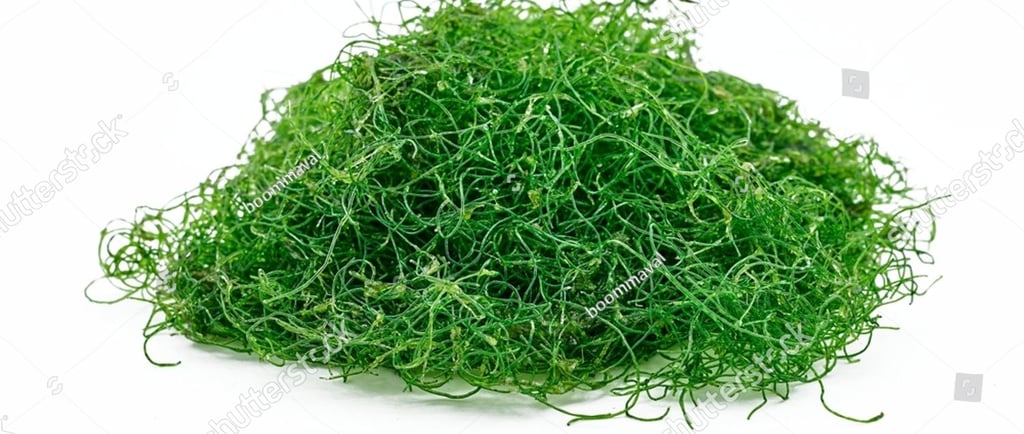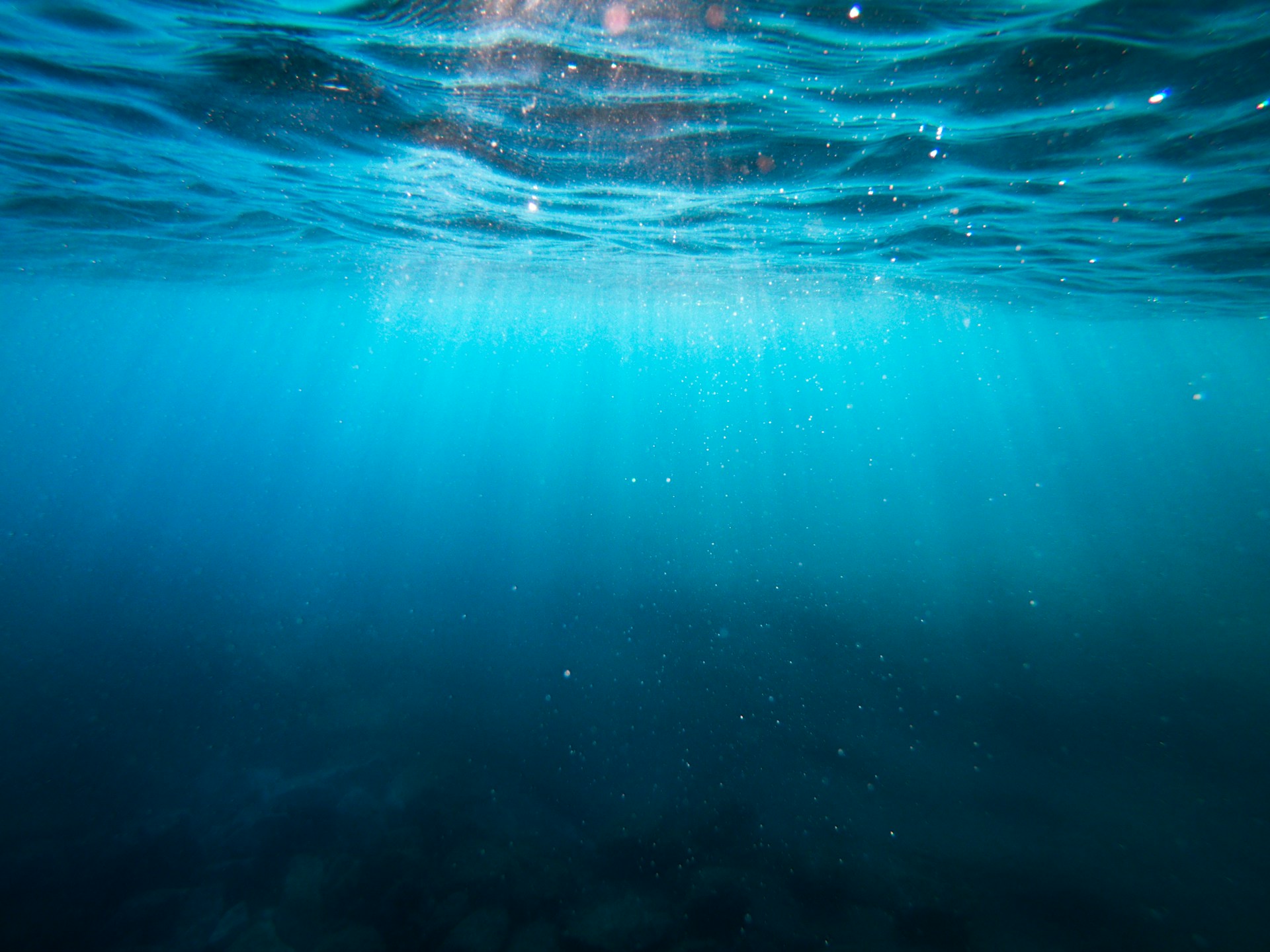Guide to Keeping Chaetomorpha in Reef Tanks
8/15/20257 min read


Introduction to Chaetomorpha
Chaetomorpha is a genus of green macroalgae that plays a pivotal role in marine ecosystems, particularly in coastal areas. Characterized by its filamentous structure, this algae can exhibit various growth patterns, ranging from dense clumps to sprawling mats. The vibrant green hue and rapid growth make Chaetomorpha a popular choice among reef tank enthusiasts. This macroalga not only enhances the aesthetic appeal of aquariums but also contributes significantly to the overall health of the aquatic environment.
The growth patterns of Chaetomorpha are dictated by several factors, including light intensity, nutrient availability, and water flow. In optimal conditions, it can proliferate quickly, often doubling in biomass within days. This fast growth rate makes it an excellent choice for biological filtration, as it effectively absorbs excess nutrients such as nitrates and phosphates from the water. Additionally, its ability to compete with unwanted algae for resources further emphasizes its importance in maintaining a balanced reef tank ecosystem.
Ecologically, Chaetomorpha serves as a crucial habitat for various microfauna and small invertebrates that thrive within it. These organisms contribute to the biodiversity of the tank and can serve as a natural food source for fish and other inhabitants. Incorporating Chaetomorpha into a refugium, a separate chamber designed for nurturing beneficial organisms, can foster a thriving community that supports the overall health of the reef tank.
In summary, the benefits of Chaetomorpha extend beyond mere aesthetics. Its growth characteristics, ecological significance, and ability to improve water quality underscore the value of this macroalga in reef tank management. For enthusiasts looking to enhance their systems, Chaetomorpha offers a multifaceted solution that aligns with the principles of sustainable aquariculture.
Benefits of Chaetomorpha in Reef Tanks
Chaetomorpha, a genus of green macroalgae, offers numerous advantages for maintaining healthy reef tanks. One of the primary benefits is its remarkable ability for nutrient export. In marine environments, nutrient overload often leads to undesirable algal blooms and deteriorates water quality. Chaetomorpha effectively absorbs excess nutrients, such as nitrates and phosphates, thereby helping to maintain a balanced ecosystem. This nutrient-exporting capability not only supports optimal water quality but also alleviates stress on corals and other marine life, fostering a healthier environment for all inhabitants.
Additionally, Chaetomorpha serves as an essential habitat for microfauna, particularly copepods. These tiny crustaceans play a pivotal role in strengthening the food web within the reef tank. By providing a sheltering environment, Chaetomorpha facilitates the growth and reproduction of copepods, which are vital food sources for larger marine species such as fish and corals. Consequently, the presence of Chaetomorpha enhances biodiversity, contributing to a more resilient aquatic ecosystem.
Furthermore, the introduction of Chaetomorpha can significantly improve overall water quality in reef tanks. The algae effectively photosynthesize, releasing oxygen which is critical for the survival of fish and other marine organisms. Moreover, its rapid growth not only helps in sequestering carbon dioxide but also aids in the stabilization of pH levels, further ensuring a favorable environment for aquatic life. Overall, the presence of Chaetomorpha during reef tank maintenance is indispensable; it supports nutrient cycling, promotes biodiversity, and ensures the general well-being of the ecosystem. In conclusion, incorporating Chaetomorpha into your reef tank can lead to a thriving aquatic habitat that benefits both the fish and the delicate overall balance of the marine environment.
Setting Up a Refugium with Chaetomorpha
Establishing a refugium for Chaetomorpha in a reef tank requires careful planning and the right equipment to ensure optimal growth and health of this sought-after macroalgae. First and foremost, it is essential to select an appropriate tank size for the refugium; typically, a 10 to 20-gallon tank works well. The size can be adjusted based on the overall volume of your main display tank, but larger refugiums generally provide a more stable environment.
Next, the choice of equipment is crucial. A reliable filtration system is needed to maintain water quality. Many aquarists opt for a simple sponge filter or a small powerhead with a filter pad to ensure water circulation while keeping detritus at bay. Additionally, a heater may be necessary to maintain a stable temperature, particularly if your main tank temperature fluctuates.
Lighting is another vital consideration when setting up your Chaetomorpha refugium. This macroalgae thrives under specific lighting conditions, with full-spectrum LED lights being the optimal choice. Providing 10 to 12 hours of light per day mimics natural daylight and promotes robust growth. Positioning the light about 6 to 12 inches above the water surface can help avoid overheating while ensuring adequate illumination.
Lastly, creating a suitable environment for Chaetomorpha involves maintaining stable water parameters. Aim for a pH between 7.8 and 8.5, a salinity level of 1.025 to 1.027, and adequate nutrient levels—specifically, nitrate and phosphate. By using a nutrient-rich substrate or incorporating beneficial fertilizers, you can enhance the growth of Chaetomorpha, paving the way for a thriving refugium that supports better water quality in the main tank. In this way, the refugium not only serves as a habitat for the macroalgae but also as a crucial component of your reef ecosystem.
Cultivating Copepods and Phytoplankton in Canada
In the realm of reef aquariums, the relationship between Chaetomorpha, copepods, and phytoplankton is vital to maintaining a balanced ecosystem. For aquarists in Canada, understanding how to cultivate these organisms can significantly enhance the health of their reef tank. Chaetomorpha, a type of macroalgae, not only serves as a food source but also contributes to nutrient regulation. The integration of copepods and phytoplankton into this environment is essential, as they provide critical benefits for many reef inhabitants.
Copepods offer a rich source of nutrition for fish, corals, and invertebrates, while phytoplankton plays a crucial role in primary production, creating oxygen and consuming excess nutrients. For instance, maintaining a consistent temperature and light cycle in your cultivation systems can promote optimal growth rates for these organisms.
To successfully cultivate copepods, consider setting up a dedicated culture system that features brackish or marine water with appropriate salinity. Incorporating aeration and adequate filtration will ensure a conducive environment for their development. Nutrients should be provided through a combination of specialized copepod diets and phytoplankton, which serves as their primary food source.
For phytoplankton cultivation, utilizing a photobioreactor or open culture systems can facilitate growth. Ensure that the chosen species of phytoplankton is suitable for your local conditions, and monitor parameters such as light intensity, CO2 levels, and nutrient concentrations closely. By successfully cultivating these organisms, Canadian reef enthusiasts can enhance their Chaetomorpha systems, ensuring a vibrant and healthy marine ecosystem within their tanks.
Maintenance and Care for Chaetomorpha
Proper maintenance and care are essential for ensuring optimal growth and health of Chaetomorpha in your reef tank. This macroalgae can flourish when placed in favorable conditions, but it also requires regular attention to address potential challenges that may arise during its cultivation. One common issue that aquarists encounter is nutrient deficiencies, particularly a lack of essential elements such as nitrogen and phosphorus. When Chaetomorpha begins to turn yellow or exhibits stunted growth, it may indicate that a nutrient imbalance is present in the water. To remedy this, you can consider supplementing macro and micronutrients to support its health.
Another challenge that can arise in maintaining Chaetomorpha is algae overgrowth. While this species is generally resilient, excessive nutrients can lead to competition with undesirable algae, which may hinder its growth. To mitigate this, maintaining consistent water quality through regular testing and adjustments is crucial. Ensuring adequate water flow around the Chaetomorpha will help detour unwanted algae by limiting their ability to attach and grow on the macroalgae itself.
Regular pruning and harvesting of Chaetomorpha are important parts of its maintenance. Trimming the macroalgae not only encourages new growth but also prevents it from becoming too dense, which can limit light penetration. A good practice is to harvest about one-third of the biomass biweekly or monthly, depending on the growth rate, which can vary based on light conditions and water parameters. Following these maintenance tips will help create an environment where Chaetomorpha can thrive, maintaining its contributions to the reef ecosystem, such as nutrient uptake and oxygen production.
Potential Problems and Solutions
When incorporating Chaetomorpha into a reef tank, aquarists may encounter several challenges that can disrupt the delicate balance of their aquatic ecosystems. One of the primary concerns is competition with other types of algae, which can emerge rapidly under certain conditions. If nutrient levels, particularly nitrates and phosphates, are high, it can lead to a proliferation of undesirable algae species. This phenomenon not only outcompetes Chaetomorpha for resources but also threatens the overall health of the marine environment.
Another potential issue involves nutrient imbalance, as an excess of nutrients can lead to a decline in water quality. The introduction of Chaetomorpha can temporarily exacerbate this problem, as it requires specific conditions for its growth. Ensuring that the water parameters remain optimal is vital for the health of both Chaetomorpha and other inhabitants of the reef tank.
To effectively manage these challenges, aquarists can take several steps. First, it is crucial to monitor nutrient levels routinely, adjusting water changes and filtration methods accordingly. Increasing water circulation can help prevent stagnant areas where undesirable algae thrive. Implementing a robust filtration system that includes protein skimming and activated carbon can also assist in maintaining water quality.
In addition, manually removing excess algae, both Chaetomorpha and other species, can be beneficial. Regular pruning of Chaetomorpha not only promotes its growth but also minimizes its potential to suffocate other important flora within the tank. Frequently introducing herbivorous fish may also help in keeping unwanted algae in check while ensuring that Chaetomorpha has the opportunity to flourish. Ultimately, maintaining a harmonious and balanced environment in a reef tank involves vigilance, proactive management, and a willingness to adapt strategies as needed.
Conclusion and Resources
Maintaining Chaetomorpha in reef tanks offers a myriad of benefits for both novice and experienced aquarists. Through its ability to absorb excess nutrients and improve water quality, this macroalga not only enhances the overall health of the aquarium ecosystem but also supports the well-being of fish and invertebrates. Proper lighting, nutrient management, and regular harvesting practices are essential for optimizing the growth and effectiveness of Chaetomorpha. By following the best practices outlined in this guide, hobbyists can establish a thriving environment that fosters biodiversity and stability.
For those eager to delve deeper into reef tank management and macroalgae cultivation, numerous resources are available. Reading material ranging from books focused on marine aquaculture to online forums can provide valuable insights and innovative techniques. Community engagement is also pivotal; connecting with fellow reef tank enthusiasts through social media platforms or dedicated forums can lead to fruitful discussions and exchanges of ideas regarding Chaetomorpha care and reef tank setup.
In conclusion, the journey of maintaining Chaetomorpha is both rewarding and informative, enabling aquarists to foster natural biological processes. As you continue your reef tank endeavors, remember to stay informed, engaged, and connected to the broader community of enthusiasts.

